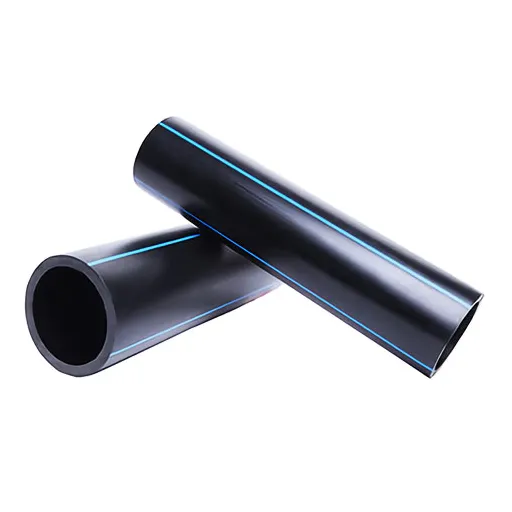HDPE water supply pipes have changed the fluid systems in home, commercial, and industrial applications. Having entire reliability and maximum performance against corrosion, HDPE pipes stand aside in comparison to conventional piping materials because of their capacity of durability, flexibility, and being corrosive-resistant. This article will give an advanced study of HDPE water supply pipes, highlighting their major features, the advantages they deliver to various industries, and real-life applications various engineers and planners consider worthy of engrossing the landscape. This guide will provide the requisite information to evaluate and understand HDPE pipes for your needs, whether you are a contractor looking for infrastructure solutions or a domestic owner interested in better-level pipes.
Introduction to HDPE Water Supply Pipes
What is HDPE?
Considered as a thermoplastic polymer, HDPE is made from petroleum. Because of its high strength-to-density ratio, it is widely used in many areas, including drinking water supply systems. The material is lightweight but durable, performing satisfactorily under pressure and structurally fair.
Being highly corrosion-resistant is an important characteristic for water supply systems. Unlike traditional mediums such as metals, HDPE would not rust or deteriorate when exposed to adversarial elements, including moisture, chemicals, and temperature variations. This bestows upon the product a long-term performance record even under aggressive conditions with minimum maintenance.
Because of this flexibility, an HDPE pipe is easily installed in different terrains and under differing conditions of load. The strength of resistant leak joints supports extreme pressure, which ensures an efficient and sustainable water system. These properties, therefore, justify the widespread use of HDPE in municipal, industrial, and residential piping applications.
Overview of HDPE Water Supply Pipes
Being recognized as very durable and reliable, HDPE (High-Density Polyethylene) water supply pipelines possess great advantages. First of all, however, the pipeline is corrosion-resistant, which means it will stay unaffected by rust or any form of scaling due to chemical exposure for the longest of times. In that regard, HDPE pipes are best for carrying potable water because the material does not allow any kind of contamination to take place, thereby maintaining the quality of water.
Another big advantage is being light and flexible. Other materials like concrete or metal tend to be very hard and rigid. Therefore, HDPE pipelines can bend with the contour of the land, reducing excavation or expensive fitting. Their inherent flexibility will lessen stress fractures or damage caused due to seismic activity or ground movement, which thus extends the system’s lifespan.
Last but not least, HDPE pipes provide top-grade performance under working pressure conditions. Highly resistant fusion-welded joints eliminate leakages and losses to carry out effective transmission of water over long distances. Combine this with minimum maintenance and highly resistant pipes in adverse environmental conditions, and you have the recipe for HDPE pipe applications in all kinds of water supply needs.
Importance of Potable Water Supply
Chemical Resistance
The use of HDPE pipes is crucial for clean water delivery: the resistance to chemicals prohibits leaching or any form of contamination, which protects water purity during transmission. Research shows that water inside the HDPE pipes with chlorination or any usual disinfectant treatment would maintain drinking water quality; basically, HDPE is inert.
Structural Integrity
An additional reason why HDPE pipes sustain potable water supply systems is that they are sufficiently durable and flexible to accommodate changes in temperature, pressure, and ground movement without compromising their structural integrity. These levels of resistance minimize the chances of pipe bursts or failures, thus fewer disruptions in water supply and a steady supply even during the harshest environmental conditions.
The advantages of HDPE pipes also include their light weight, which helps not only in transportation but also in placing them underground. This really helps save time and money, especially in municipal and commercial water supply projects. Providing the best of plumbing together, HDPE infrastructure stands second to none in reducing maintenance requirements and operational costs and is thus considered best globally for modern potable water systems.
Advantages of HDPE Over Traditional Materials
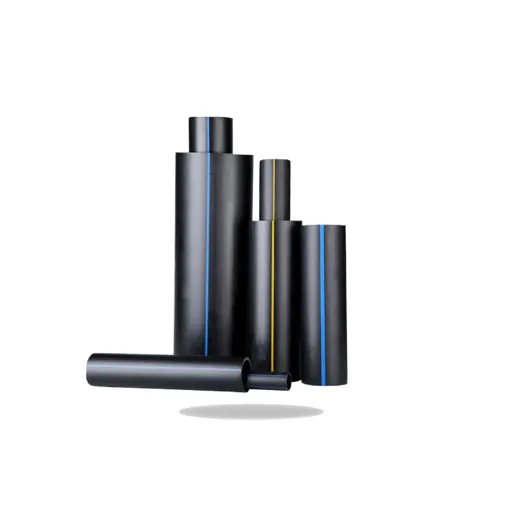
Cost-Effectiveness and Longevity
Known for its cost-effectiveness and having a longer service life, the HDPE pipes fit into various industries, especially water supply systems. The following section lists five paramount aspects supporting these advantages:
- Lower Installation Costs: Being lightweight, an HDPE pipe will incur lower transportation and handling costs. Besides, its flexibility allows an easier installation with fewer fittings and less excavation compared to conventional materials like concrete or steel.
- Lower Costs of Maintenance: The HDPE pipes retain properties that keep them resistant to corrosion, chemical exposure, and biological growth, meaning that such pipes require very little maintenance for their service life and likewise afford cost savings compared with materials subject to rusting or scaling.
- Longer Service Life: The usual service life of HDPE pipes is at least 50 years if used under normal conditions. And with such a long life, it reduces replacement frequency and the related expenses that usually come with using other kinds of materials.
- High Impact and Stress Resistance: HDPE pipes are intended to produce a pipe system that can withstand impact and environmental stresses, such as temperature variations and ground movements. This resistance to damage or failures could provide uninterrupted operations.
- Energy-Efficient Management: The smooth interior surface of HDPE pipes provides lower frictional losses in the fluid transport, resulting in less energy for pumping. Since it minimizes energy costs during the lifespan of the pipe, it becomes more significant in long-distance systems.
Key Takeaway: These factors make HDPE pipes most favorable versus any other material with respect to expenses and lifespan, thus setting forth their preferability for modern infrastructure.
Lightweight and Easy Installation
Being barely heavy, HDPE pipes bring all the advantages of easy handling, transportation, and installation. Being lighter than the traditional materials of steel or concrete makes their logistics simple and thus inexpensive in terms of labor. Consider in detail five benefits of the lightness of HDPE pipes and ease of installation:
- Reduced Transportation Costs: Because HDPE pipes are light, shipping costs diminished, especially for infrastructure projects on a large scale in which materials need to be ferried over great distances.
- Simplified Handling: Being light must allow for easy handling with less machinery usage, hence fewer workplace injuries, and completing timely manner.
- Faster Installation Process: Since there is less weight, installation of HDPE pipes is faster and thus shorter construction time, consequently less tying up.
- Lower Labor Costs: The installation crews appropriately made more money in labor because of less effort required in moving and placing the pipes.
- Adaptability to Difficult Terrains: Transport of HDPE pipes proves easier for remote and rugged terrains, where the challenge of heavier materials always places a few hurdles in its way for installation.
These factors make HDPE pipe a very practical and economical option, particularly when speed and application to terrains of varying nature become a necessity.
Resistance to Chemical Degradation
HDPE pipes are known to be highly resistant to chemical degradation, making them the ideal choice in industries dealing with corrosive substances. The resistance ensures durability, reliability, and long-term performance under aggressive chemical conditions. Some examples illustrating the resistance to chemicals provided by HDPE pipes are:
| Chemical Type | Resistance Description |
|---|---|
| Acids | HDPE pipes resist a large spectrum of acids, such as sulfuric acid and hydrochloric acid-widely used in industrial processes. They keep such acids from corroding or eroding, even with prolonged exposure. |
| Alkalis | HDPE pipes withstand corrosive alkalis such as sodium hydroxide and potassium hydroxide; hence, they are used in chemical plants and wastewater treatment plants. |
| Organic Solvents | It is resistant to degradation by organic solvents, thus maintaining the plastic integrity of applications in the petrochemical and pharmaceutical worlds. |
| Salt Solutions | The material remains unaffected by saline environments, including concentrated salt solutions, allowing its use in desalination plants, marine applications, and brine pipelines. |
| Oxidizing Agents | It resists attack from oxidizing agents such as hydrogen peroxide and chlorine dioxide, often used in industrial cleaning and water treatment facilities. |
Summary: Such glory of chemical resistance enables the HDPE pipe to keep its structural and functional integrity in the diverse realms of hostile chemical environments, thus reducing maintenance costs and offering better operational efficiency.
Common Applications of HDPE Water Pipes
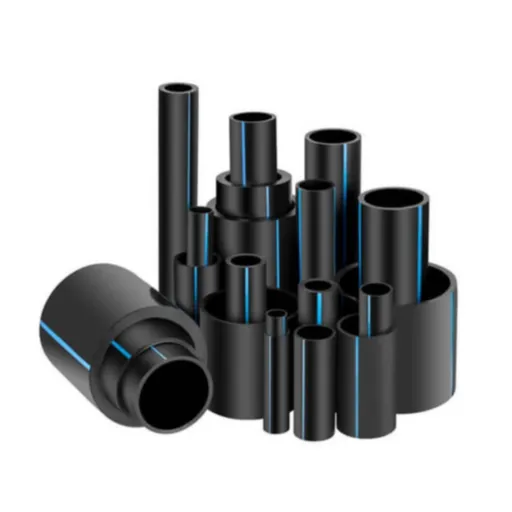
Use Cases in Potable Water Systems
HDPE water pipes are now considered superior to any other for potable water systems due to their unparalleled durability, flexibility, and corrosion resistance. These pipes are being distributed in enormous amount in municipal, industrial, and residential water distribution projects. HDPE does not leach any harmful chemical substances in water, even at extreme temperature variations; hence, water quality remains unharmed.
One important feature of HDPE pipes for potable water systems is their ability to maintain structural integrity in high-pressure situations. For instance, polyethylene PE100 pipes are designed to handle pressure up to 25-bar pressure, which is most suitable for the requirements of modern water systems in urban developments. Furthermore, the smooth inside surface of the pipe causes a minimum energy loss in water transportation, thereby greatly increasing the operational efficiency of such water systems.
In the installation of polyethylene pipes, the most modern methods of fusion welding, such as butt fusion and electrofusion, are used. The joints formed cannot leak; therefore, no contamination from water or loss into the distribution network can be considered. Recent data show that firm joints can result in water losses that are 30%-40% less than conventional pipeline systems.
Another advantage of HDPE water pipes includes their light weight; this simplifies the work of transportation and installation, whereby project costs and schedules fall. Their life expectancy, however, might go beyond 50 years with practically no maintenance issues, yet further filling the void on economic and operational considerations for the potable water systems.
Applications in Sewer Systems
Although today sewerage systems have mostly adopted HDPE pipes relying on their chemical, physical resistance to wear, thus making them applicable in transporting wastewaters and other effluents safely and efficiently. Each below states the five important sewer applications for HDPE pipes:
- Gravity Sewer Lines: Being resistant to soil movements, HDPE pipes are used in gravity sewer systems, considering also that they have a high strength-to-weight ratio. In addition to that, the smooth interior surface of HDPE pipes provides the least friction to other sewer flow, which helps low blockage.
- Pressure Sewer Systems: Under pressure from inside, they are more suited for pressurized sewer systems. Flexibility and reliability of joining systems of HDPE Pipes are the reasons that they can resist such pressure.
- Industrial Wastewater Transport: The chemical resistance of HDPE makes it adequate for industrial wastewater transmission. Since most industrial wastewater streams contain corrosive substances, the systems built are preserved and offered to operate adequately for longer periods.
- Stormwater Drainage: HDPE pipes are used in stormwater drainage due to their ability to pass large volumes of water during peak discharge periods. They maintain their integrity in times of extreme weather conditions.
- Sewage Pumping Stations: The flexibility and joint integrity of HDPE pipes best serve the others being connected within sewage pumping stations, whereby an assured system operation function with reduced maintenance is assured.
The innumerable applications and performance features make HDPE pipes an indispensable component in ensuring the reliable and sustainable development of sewer infrastructure.
Industry Usage and Main Water Supply
Renowned for indomitable durability, corrosion resistance, and long-term cost efficiency, HDPE pipes are indispensably utilized in main water supply networks in various industries. These pipes stand strong enough to handle high-pressure water systems; thus, they stand as eminent candidates for water infrastructure development in both urban and rural setups. Usually, these pipes find themselves in municipal water system applications, where leak-free connections minimize water loss en route to the end-user.
Municipal Applications
Key data indicate that HDPE pipes have lower potential contamination in potable water systems due to their non-reactive nature. Furthermore, their flexibility allows installation in quite diverse terrains, including earthquake-prone ones, where conventional materials could fail.
Agricultural Use
In areas such as agricultural irrigation, the HDPE pipes are of use to provide water flows for large-scale operations, system downtimes, and maintenance needs. With the capacity of concurrently carrying water for long distances, these factors elevate HDPE pipes as a viable option for handling modern water supply issues.
With a lifespan above half a century coupled with high recycling potential, HDPE pipes stand to uphold sustainable water management techniques, which is indeed in line with global endeavors in resource conservation.
Installation Techniques for HDPE Water Supply Pipes
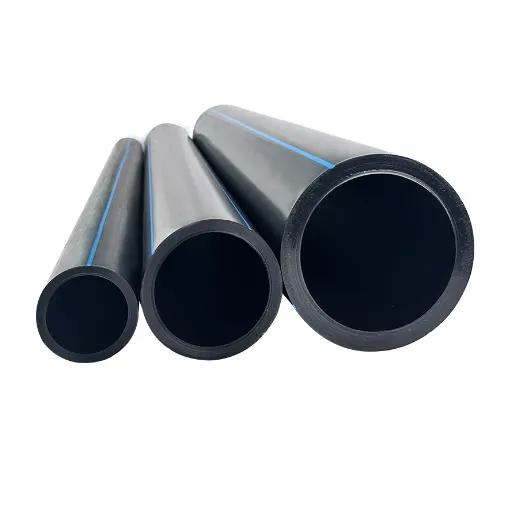
Jointing Methods and Fittings
Leak-proof jointing and fitting methods are used on HDPE water supply pipes so that the system remains intact under various service conditions and operating requirements. Welding and fusion of pipes are among the most common methods employed; these are considered the most durable and reliable in providing a joint that is really seamless.
| Method | Temperature Range | Description & Applications |
|---|---|---|
| Butt Fusion | 400°F-450°F (200°C-230°C) | Here, the ends of the pipe are heated at a specified temperature, and after heating, pressed together to form a uniform joint. Among others, butt fusion is preferred for large pipe diameters and provides for a joint as strong as the pipe itself, which is of extreme importance in high-pressure systems. |
| Electrofusion Welding | Controlled Electric Heating | This is a very precise jointing method in which an electric heating coil fits inside the fitting, uniformly heating and fusing the pipe with the fitting. In electrofusion, repairs and installations are very well executed within tight spaces or when joining two pipes of different diameters. Due to such precision, any failure of the joint from the method used is highly unlikely, thus making it suitable for critical applications such as potable water supply systems. |
| Mechanical Fittings | No Heat Required | Where it is not possible to provide thermal fusion, mechanical fittings afford a more versatile and faster alternative. Such mechanisms hardly ever exist without compression-type or flange-type assemblies that apply direct physical force to establish a positive, water-tight seal. Mechanical couplings are typically used in temporary projects or for modifications to systems. |
Quality Assurance: Each method is allied with a set of quality controls and tests to ascertain the integrity of the joint, such as hydrostatic pressure testing and visual inspection. The decision to use certain jointing methods is governed by the pipe diameter, the environment of installation, and any operational requirements placed upon the water supply system. When these joints are properly placed, quality fittings will greatly enhance the service life and performance of HDPE pipelines.
Guidelines for Proper Installation
High-Density Polyethylene (HDPE) pipeline installation must be done in accordance with engineering standards and requirements, as well as paying due attention to each step of the installation for the best performance of the system, ensuring structural integrity:
Trenching and Bedding
Trenches should be excavated at the proper depth and width to provide sufficient clearance for the setting of pipes and for future maintenance work. The bedding should be made of material free from sharp objects and be sufficiently compacted to provide a uniform support so that it would minimize concentrated stresses and hence avoid deformation of the pipe due to long-term stress or eventual failure of the pipe.
Handling and Storage
While HDPE pipes may be one of the lightest pipes, they are easily damaged due to their mishandling. The pipes should be kept away from direct sunlight and sharp edges to avoid UV degradation and physical damage, respectively, during transport and storage, so as not to impair their structural strength.
Thermal Considerations
Being a thermoplastic, HDPE expands or contracts due to changes in external atmospheric conditions. Hence, allowance for expansion with expansion loops or offsets should be given in the design, more so in ambient conditions that have greater thermal fluctuations.
Alignment and Joining
During erection, the pipes should be aligned properly to avoid stresses resulting from misalignment. The fusion welding or mechanical jointing should be accomplished under controlled conditions and carried out by certified personnel to ensure that the joint attains the strength required and is leak-tight.
Pressure Test
The pressure tests are performed after the installation to assess the reliability of the pipeline and ascertain that it can sustain the stresses applied during operation. Hydrostatic testing, generally done at 1.5 times the design pressure, discloses the weak spots or leaks in the application.
The Backfilling Procedure
They are important considerations to properly backfill in maintaining the structural integrity of a pipeline. The first fill material must be free of any large, coarse aggregates and compacted with precaution not to damage the pipe below. Then, capable layers can be added to provide adequate cover to prevent surface load from directly affecting the pipeline.
Best Practice Summary: Following these better practices ensures HDPE pipelines remain fully operational under the intended conditions of operation, thus prolonging their working life and resulting in reduced maintenance.
Challenges and Solutions in Installation
HDPE pipeline installation offers various potential challenges that, bearing in mind the end goal of maintaining operational efficiencies and structural integrity, must be addressed correctly. A major hurdle is trench preparation. The trench bedding must be uniform and free from debris to prevent uneven settling, which places stress on the pipes, resulting in deformation. Therefore, we should consider using advanced surveying techniques like laser grading or GPS-guided equipment to achieve exact trench excavation and consistent trench bedding.
Challenge: Joint Connections
Another crucial problem lies in ensuring proper joint connections. Fusion welding offers perhaps the best method, provided sufficient attention is paid to temperature control and to the cleanliness of the joint surface. Otherwise, this results in weak or faulty welds.
Solution: Automated Systems
Hence, the use of an automated fusion machine that allows real-time monitoring to ensure the correct application of temperature and pressure must be encouraged; hence, it nearly eliminates any possibility of error.
Moreover, factors from outside may affect the environment and lead, with time, to the deterioration of pipeline integrity, such as a high level of acidity in the soil or highly aggressive chemicals. To safeguard HDPE pipes against such aggressive environments, the use of protective linings or coatings has proved to be quite effective. New developments in this regard have brought about multi-layer HDPE pipes with additional layers that render resistance to adverse conditions, thereby making them resistant to corrosive environments.
The ability to address these kinds of issues through the use of novel solutions and through proper systems design serves to increase the lifespan of HDPE pipelines while making them compliant with industry standards and functional throughout the entire lifecycle of the systems.
Current Trends and Future Outlook
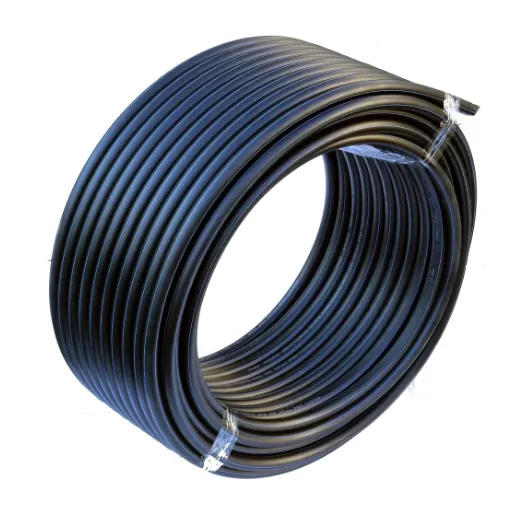
Innovations in HDPE Technology
HDPE classifications and properties have been developed in order to provide its durability in particular and diversified applications. One of those innovative developments is bi-modal HDPE, which enhances tensile strength and imparts resistance to slow crack growth, thus qualifying as a high-performance material against mechanical stresses and harsh environmental conditions for such industries. Also, bi-modal HDPE makes it possible to have reduced wall thickness in pipelines without any compromise on durability, which thereby enhances material efficiency and economy.
Among other breakthroughs, what the scientists did was to arrange smart materials in HDPE systems so that sensors and monitoring technologies could be integrated directly into the pipeline structure. These embedded sensors would monitor and provide real-time data regarding specific conditions-things like temperature, pressure, or even leaks-so that such information could be used for predictive maintenance or fast reacting in case of failure. From a pipeline standpoint, it really revolutionizes aspects of safety and operations optimization-in other words, reducing downtime while ensuring asset lifecycle extension.
Sustainability issues have led to the evolution of an emerging rHDPE market where reclaimed plastic is reprocessed into high-quality HDPE products. Modifications in purification and processing methods have been able to production of rHDPE that is mechanically comparable with virgin materials while decreasing environmental impacts. These developments bring about the significance of linking sustainability with functionality in forging the future landscape for HDPE utilization in various end uses. Thus, it can be said that HDPE technology continues to grow and develop to answer modern industries’ demanding criteria with exactness and reliability.
Market Demand and Sustainability Considerations
Global demand for HDPE, especially recycled HDPE (rHDPE), has grown in recent years. In fact, the demand stems from the versatility of the product, cost efficiency, and sustainability appeal. Packaging, construction, and automotive sectors have increasingly used recycled materials under pressure from regulation as well as consumer preference for green products. Hence, thrust on circular economy practices, wherein materials are reused perpetually to reduce waste and conserve natural resources, stands tall among factors fueling such growth.
Market Growth
Recent market analyses have projected the rHDPE market to show a CAGR of above 5% over the next decade. In its upward trajectory, the market is further supported by the growing impetus worldwide to reduce GHG emissions, reduce plastic waste, and promote EPR programs.
Environmental Benefits
From an environmental standpoint, rHDPE outputs in an appreciable reduction in carbon emissions if compared with virgin HDPE. Studies prove that recycled plastics consume 50% less energy and above.
The companies would benefit from not only lowered material costs but also enhanced environmental, social, and governance (ESG) ratings, which have become paramount regarding corporate reputation and attractiveness for investments.
Continuous improvement must be achieved in collection systems, recycling method standardization, and ensuring that the rHDPE material quality remains fit for industrial use. Further ongoing developments of recycling technologies, including advanced sorting methods and chemical recycling methods, will mitigate these issues, ensuring a sufficiently scalable and sustainable supply of high-grade rHDPE to industrial users.
Regulatory Standards and Compliance
In respect of these considerations, such standards provide the foundation upon which recycled high-density polyethylene (rHDPE) can be used in industries. By conforming to these standards, materials are supposed to be safe, high quality, and environmentally friendly-a trust going from the manufacturer’s shelf to the consumer trust borne by the regulatory authorities. These standards restrict contaminants and are meant to ensure the material is safe for packaging food and drinks.
The implementation of a strict quality assurance system is required to satisfy regulatory requirements. Test methodologies include assessment of contaminant levels, material consistency, and mechanical properties of the recycled polymer. Certification by the International Organization for Standardization (ISO) or other eco-labeling schemes provides an additional layer of third-party verification of compliance that adds to the goodwill. Keeping an eye on evolving regulations so as to remain compliant is essential as these standards shift with the development of new recycling technology or changes in environmental priorities.
Compliance Impact: I view regulatory compliance to be a must in any industrial application of rHDPE. It at least makes sure that they are complying with legal provisions and, in so doing, manufacturers are putting themselves forward as responsible partners for the circulatory economy. From the perspective of the wide acceptance of recycled materials, prioritizing compliance could certainly lessen the use of virgin plastics and promote sustainability on a global scale. An increase in innovation, better consumer confidence, and hence, greater long-term applicability will be imbued in the solutions that rHDPE seeks to provide upon staying committed to going beyond mere compliance.
References
- Study on the mechanical responses of plastic pipes made of high-density polyethylene (HDPE) in the water supply network
Published by MDPI, the study explores the mechanical properties and uses of HDPE pipes in water supply schemes. - Long-term testing methods for HDPE pipe-advantages and disadvantages: A review
Considered to be published on ScienceDirect, this review considers the durability and methods for lifetime prediction for HDPE pipe. - Volatile organic components migrating from plastic pipes (HDPE, PEX, and PVC) into drinking water
Published on ScienceDirect, this study investigated the water quality passing through the HDPE pipes and the migration of organic compounds.
Frequently Asked Questions (FAQ)
Q: What is an HDPE water supply pipe?
A: An HDPE water supply pipe is a water pipe used in any water application. It is made of high-density polyethylene material. These pipes are durable with corrosion resistance against chemicals and are thus suitable for water infrastructure projects.
Q: What advantages are granted by HDPE pipes over PVC?
A: There are numerous advantages of HDPE pipes over PVC, including greater resistance to abrasion and flexibility. However, other IDs also include that they are easier to install and have higher pressure ratings, and can be used for both hot and cold water applications.
Q: How does the density of HDPE affect its performance?
A: Being dense produces strength and durability for HDPE. High-density polyethylene would be less prone to leakage and able to bear pressures encountered in water mains, thus minimizing the use of fittings and maintenance.
Q: What is the common length for HDPE water supply pipes?
A: High-density polyethylene water pipes usually come in lengths ranging from 20 to 50 feet; they can also be custom-manufactured to suit the needs of the particular projects involving the requirements of directional drilling technique or installation methods.
Q: Are HDPE pipes suitable for geothermal applications?
A: Yes, HDPE pipes are widely used in geothermal applications because of their heat resistance and chemical compatibility. Their plasticity makes them perfect for underground installation, where traditional materials may fail.
Q: What all arethe applications of HDPE pipes related to the water supply systems?
A: HDPE pipes are commonly used for handling potable water and industrial applications, mining, and gas distribution. Due to variation in the pressure they encounter with respect to their environment, they are considered a reliable option for water supply systems.
Q: How do HDPE pipes react to surge pressures?
A: HDPE pipes absorb surge pressures effectively because of their flexibility and high pressure rating. This quality protects them from sudden variations in pressure, and hence leakage and failure, during periods of change in water flow. Thus, from the design point of view, these pipes would be used in dynamic water systems.
Q: What raw materials are used in the manufacture of HDPE pipes?
A: HDPE pipes are made from petroleum-derived high-density polyethylene. The manufacturing of these pipes ensures the retention of the structural integrity and performance of these pipes for various applications, including cold water supply.
Q: Is slip-lining commonly used with HDPE pipes?
A: Yes, slip-lining is a very common method using HDPE pipes for the rehabilitation of existing pipelines. The technique allows the installation of new pipes inside old pipes; therefore, a large excavation is not required, minimizing the disruption to the surrounding area.
Q: How does the outside diameter of HDPE pipes affect installation?
A: The outside diameter of HDPE pipes determines compatibility with fittings and connectors, which in turn is highly important during installation. Selecting the correct diameter ensures that the pipes fit together securely, minimize potential points for leaks, and thus enhance the general integrity of the system.
Conclusion
HDPE water supply pipes represent a revolutionary advancement in modern infrastructure, offering unparalleled durability, flexibility, and cost-effectiveness. Their superior chemical resistance, lightweight design, and long service life make them the preferred choice for a wide range of applications from municipal water systems to industrial installations. As technology continues to evolve with innovations like smart sensors and recycled materials, HDPE pipes will remain at the forefront of sustainable water management solutions for decades to come.



